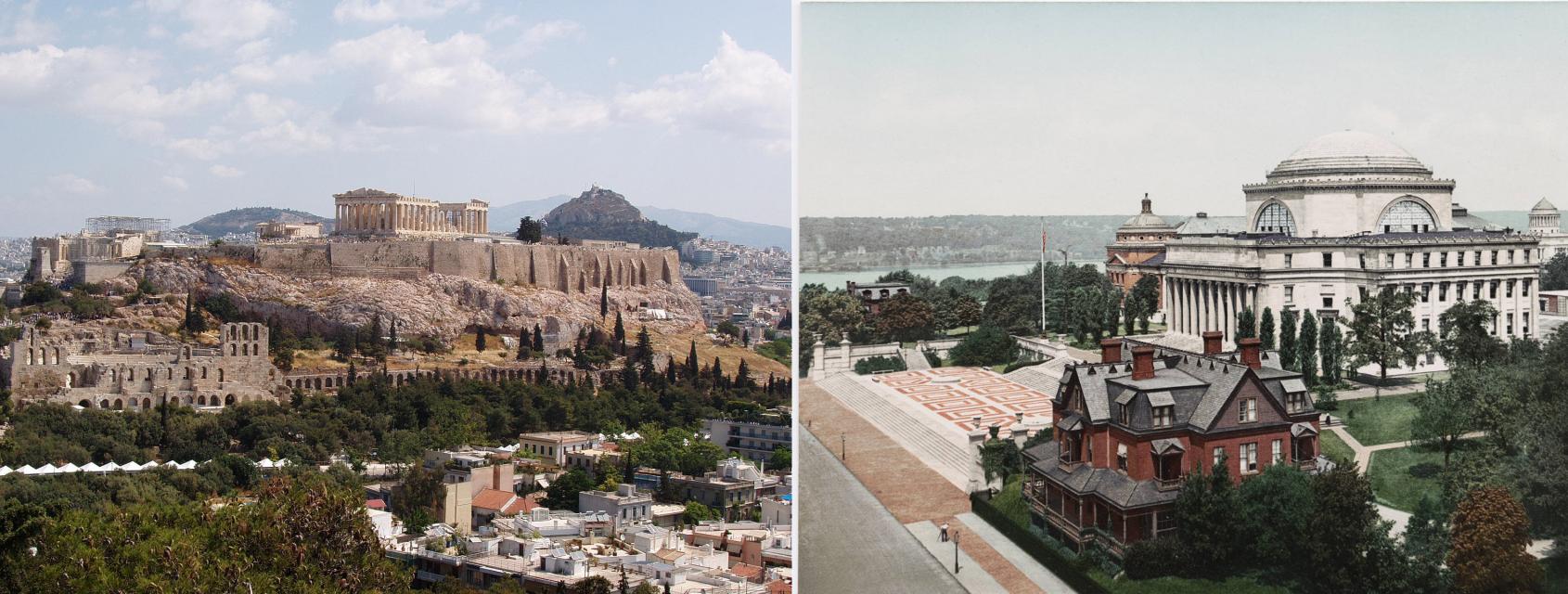Art


Exploring the Parthenon
In Greek, acropolis literally means “city on the heights.” The Athenian acropolis is the natural limestone formation that rises above the center of the city of Athens. The Parthenon was built on the acropolis, which in antiquity was the city’s religious center. The acropolis is a key strategic point of defense as it provides visibility of the surrounding countryside. It also communicates its sacred importance to all the people of Athens who look up at it. Similarly, the site of Columbia’s current campus was chosen for its high elevation, which gives the neighborhood its name, Morningside Heights. When the site for the Morningside campus was chosen in the late 19th century, Columbia’s buildings were the tallest in the area, providing sweeping views of the Hudson River to the West and overlooking Harlem to the East.

The Parthenon is probably the most celebrated of all Greek temples. It was constructed of marble and provided with more sculpture than any temple before or after. Although Doric in style, it incorporates- and successfully integrates - many characteristics of the other major architectural order, Ionic, and perhaps even introduces the third order, Corinthian. It employs numerous refinements as well as a rather complex proportional system of 4:9, which is expressed in both its plan and elevation. All of this is carried out to what is often described as "millimeter accuracy."
The building currently called the Parthenon was the Temple of Athena Parthenos. The term "Parthenon" had initially been used only for rear, or west, room, but it was later extended to the entire structure. It was not the first temple to Athena in this location, but it was the last, the largest, and certainly the most ornate.
Excerpt from The Parthenon: From Antiquity to the Present, by Barbara A. Barletta.

Please log in to comment.